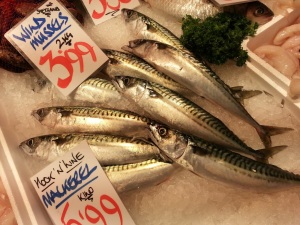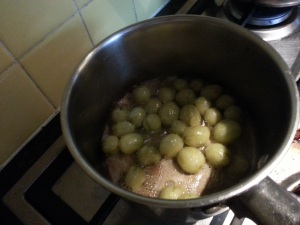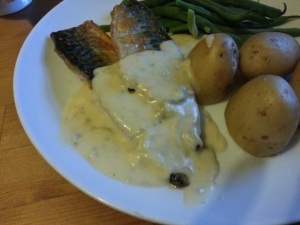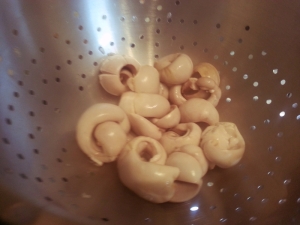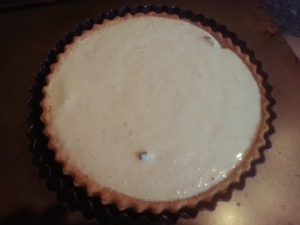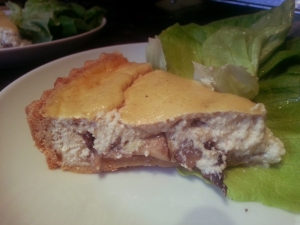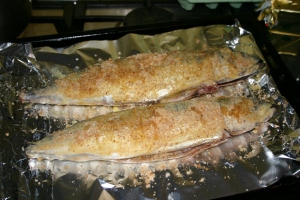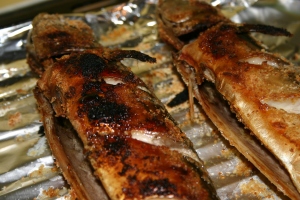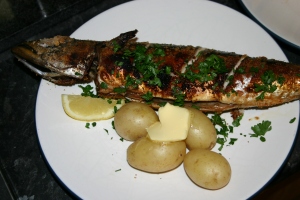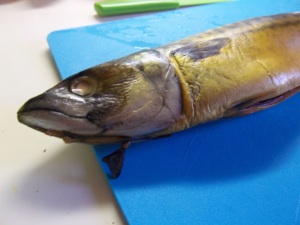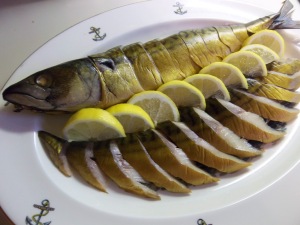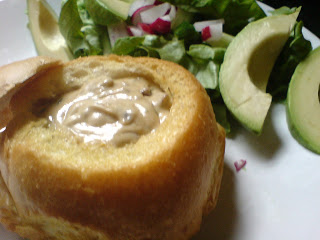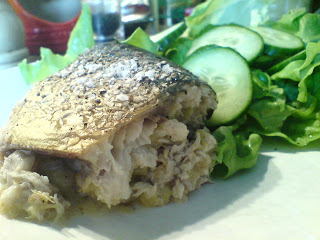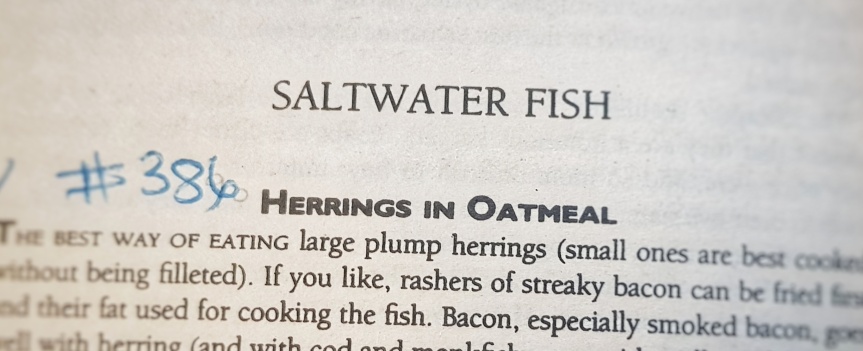
It’s always fun looking back after I have cooked all the recipes over a chapter or section of English Food. The Saltwater Fish section contained just 16 recipes (see the full list below), but Jane manages to pack in a decent variety of both dishes and fishes. Having variety in there was important to her, because: ‘[w]e live in islands surrounded by a sea that teems with fish, yet we eat fewer and fewer kinds, and those that are not always the best.’1
That said, she doesn’t shy away from focussing upon certain species, and she gives a very big nod to the herring – and the mackerel too – recognising its importance, both culturally and economically, to English history. Recipes for this oily fish range from the simple and sublime such as #386 Herrings in Oatmeal, #380 Gooseberry Sauce for Mackerel or #159 Creamed Roe Loaves. However, that’s where the enjoyment stops; of the 18 recipes in this section 10 are for either herring or mackerel, 4 were good and the rest mediocre at best. Overcooked fish with stewed apples and onions, with #390 Isle of Man Herring Pie being the worst, scoring a rare 1/10.
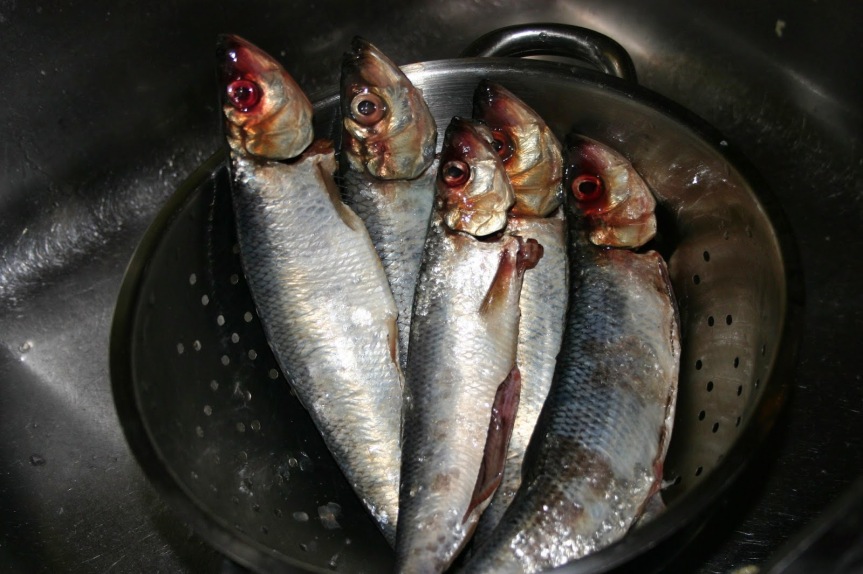
Conspicuous by their absence are the other historically important fish: cod and haddock (and the rest of the cod family too). There is no grilled cod steak and no haddock in parsley sauce – there is no fish and chips! Perhaps she omitted them because of her disapproval in the English focussing too much on these fish, and therefore did not require representation. It would be fair enough, but why put in all the bad herring recipes? It makes no sense: I wish I could ask her.
There is variety in the remaining recipes: whitebait, turbot, halibut, skate and sole are represented, but where are the sardines, pilchards, John Dory, mullet, monkfish and bass? Where is the star-gazy pie for goodness sake? She certainly cooked with them all – she even wrote a massive cookery book on fish2 – maybe she held back, knowing that a saltwater fish section would be largely ignored by her readership?
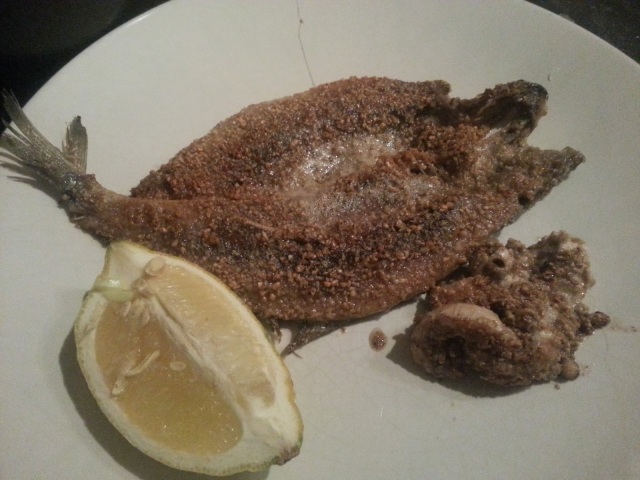
I am being overly harsh perhaps, because in this relatively small selection of recipes, I feel like I have cooked a variety of sea fish in a variety of ways, enough now to be confident in cooking anything I might come across at the fishmonger’s shop; after all, you can never be sure exactly what will be there, as Rick Stein has pointed out: ‘Don’t be too dogmatic about what you mean to buy at a fishmonger. If another fish looks fresher and shinier than the one you came in for, buy that.’ We forget that, ‘[sea fish] is wild food; you have to take what you can get, not necessarily what you want.’3
Much has happened since Jane wrote English Food: right now fish – or, rather, fishing – is being used as a political pawn by the British and the French post-Brexit. Since the first edition of the book was written, fish has been caught unsustainably, without regard to the animals caught and killed in what was regarded as collateral damage: today, the veil has been lifted and in response we can buy line-caught mackerel and dolphin-friendly tuna, and my fishmonger (Out of the Blue in Chorlton, Manchester) only sells fresh fish that has been caught sustainably. Not all fishing is ethical, but at least there is now a choice.
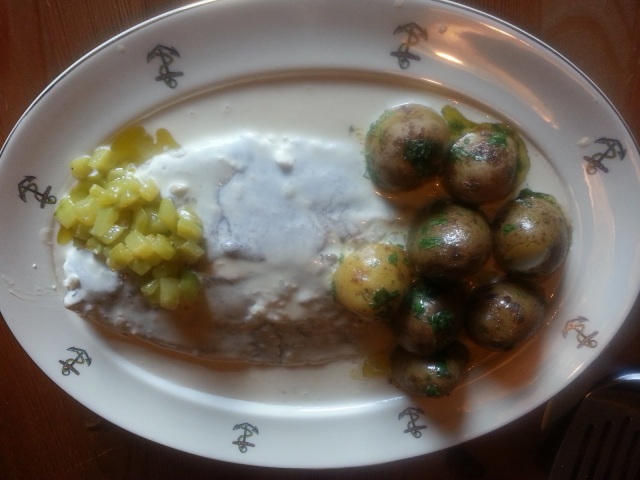
This section of the book was a real mixed bag, with as many poor ones as delicious ones. No dish scored 10/10, but one – the aforementioned #386 Herrings in Oatmeal – scored a 9. There was too the discovery of the fact that mackerel can be paired very well with gooseberries, and that herring roes are surprisingly delicious.
Of the non-oily fish recipes, #218 Whitebait was great, ending up on a pop-up restaurant menu, though I avoid them these days now they are off the sustainable list after it was discovered that these fish are the fry of several species, rather than a single species in their own right as previously thought. It was great to eat fish like turbot and halibut, fish I would never have dared cook before I started the blog. I was surprised – and very much delighted – to see #302 Caveach of Sole, fish cured with citrus juice or fruity vinegar, something rather trendy these days, and not considered English at all.
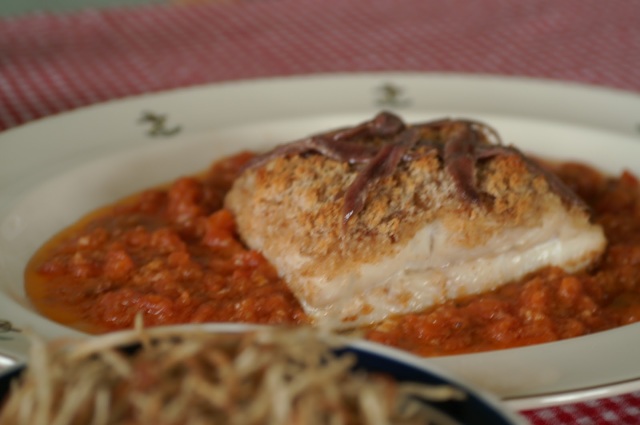
Because of the high proportion of underwhelming recipes, this section score a mean of just 6.63/10, making it the second worst so far – only 7.3 Griddle Cakes & Pancakes score less. That said, these data should really be analysed with the median or mode. Looking at the data this way, we get a median of 8 and a mode of 8.5/10 – the cluster of bad recipes just small enough to be ignored. Looking at it this way, it comes out as one of the best chapters: that’s statistics for you.
If you like the blogs and podcast I produce, please consider treating me to a virtual coffee or pint, or even a £3 monthly subscription: follow this link for more information.
As usual, I have listed the recipes below in the order they appear in the book with links to my posts and their individual scores, so have a gander. It is worth pointing out, that my posts are no substitute for Jane’s wonderful writing, so if you don’t own a copy of English Food, I suggest you get yourself one.
#355 Devilled Herring or Mackerel 5.5/10
#406 Soused Herrings 4.5/10
#133 Welsh Supper Herrings 3.5/10
#390 Isle of Man Herring Pie 1/10
#372 Soft Roe Tart 6.5/10
#159 Creamed Roe Loaves 7.5/10
#391 Soft Roe Paste 5.5/10
#380 Gooseberry Sauce for Mackerel 8.5/10
#158 Gooseberry Stuffing for Mackerel 8/10
#218 Whitebait 8.5/10
#444 Poached Turbot with Shrimp Sauce 8.5/10
#342 Halibut with Anchovies 8.5/10
#141 Warm Skate Salad with Shan Hill’s Dressing 5/10
#376 Eliza Acton’s Sole Stewed in Cream 8/10
#302 Caveach of Sole 8/10
References
1. Grigson, J. English Food. (Penguin, 1992).
2. Grigson, J. Jane Grigson’s Fish Book. (Penguin, 1993).
3. Stein, R. English Seafood Cookery. (Penguin, 1988).





